Jamin Chen
LEAN-LIFE: A Label-Efficient Annotation Framework Towards Learning from Explanation
Apr 16, 2020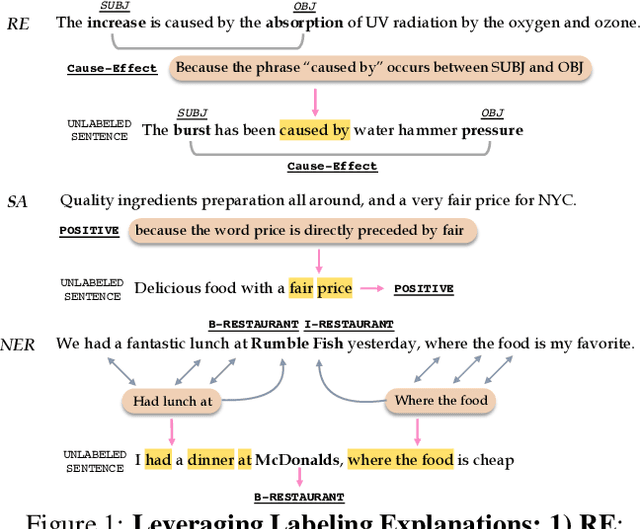
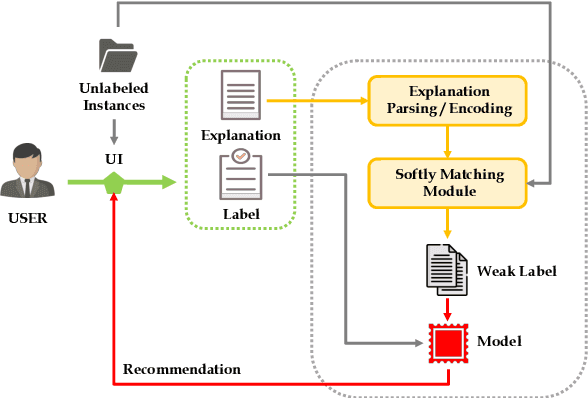
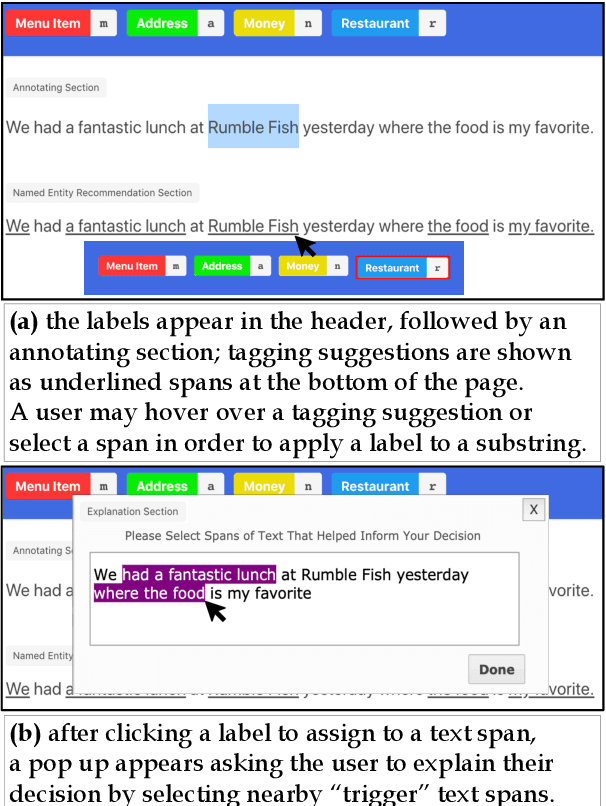
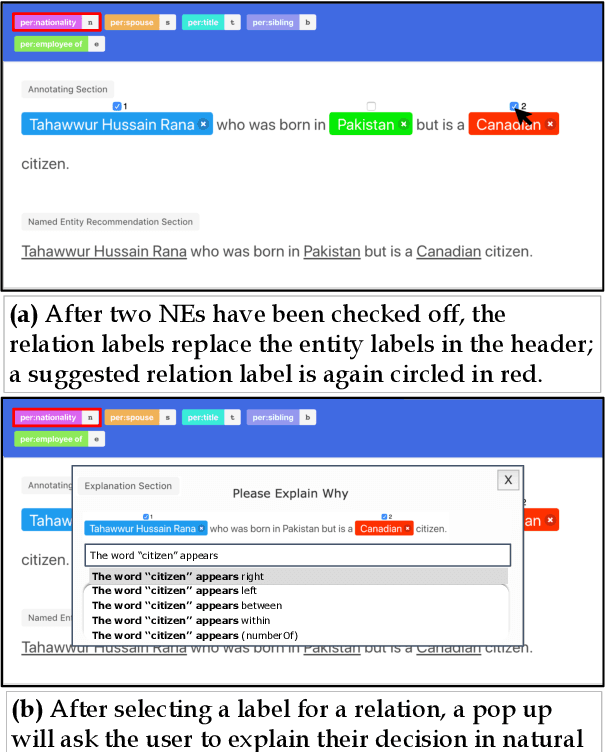
Abstract:Successfully training a deep neural network demands a huge corpus of labeled data. However, each label only provides limited information to learn from and collecting the requisite number of labels involves massive human effort. In this work, we introduce LEAN-LIFE, a web-based, Label-Efficient AnnotatioN framework for sequence labeling and classification tasks, with an easy-to-use UI that not only allows an annotator to provide the needed labels for a task, but also enables LearnIng From Explanations for each labeling decision. Such explanations enable us to generate useful additional labeled data from unlabeled instances, bolstering the pool of available training data. On three popular NLP tasks (named entity recognition, relation extraction, sentiment analysis), we find that using this enhanced supervision allows our models to surpass competitive baseline F1 scores by more than 5-10 percentage points, while using 2X times fewer labeled instances. Our framework is the first to utilize this enhanced supervision technique and does so for three important tasks -- thus providing improved annotation recommendations to users and an ability to build datasets of (data, label, explanation) triples instead of the regular (data, label) pair.
KagNet: Knowledge-Aware Graph Networks for Commonsense Reasoning
Sep 04, 2019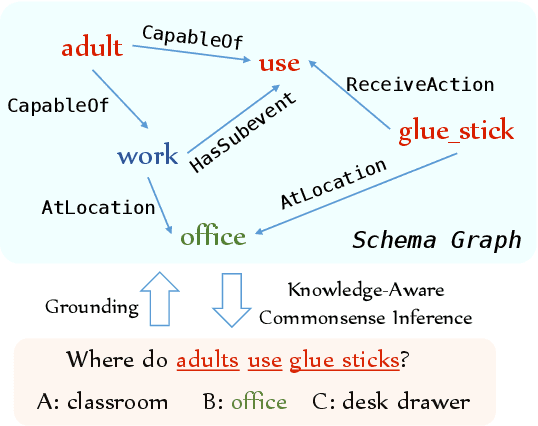

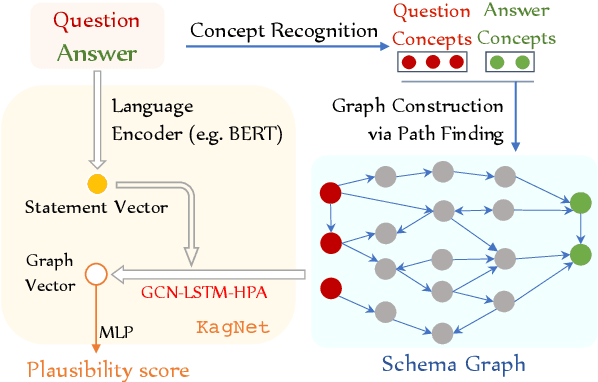
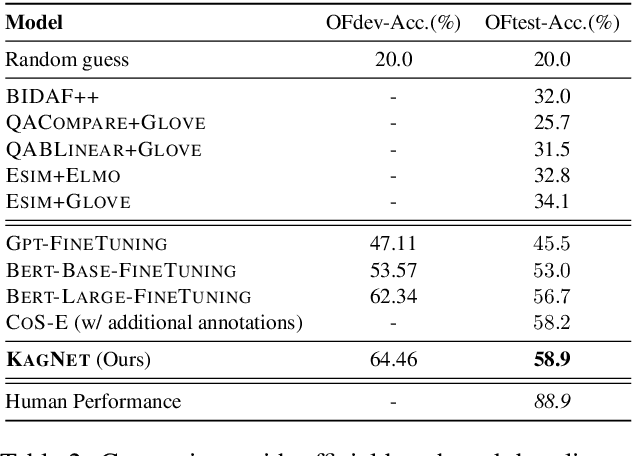
Abstract:Commonsense reasoning aims to empower machines with the human ability to make presumptions about ordinary situations in our daily life. In this paper, we propose a textual inference framework for answering commonsense questions, which effectively utilizes external, structured commonsense knowledge graphs to perform explainable inferences. The framework first grounds a question-answer pair from the semantic space to the knowledge-based symbolic space as a schema graph, a related sub-graph of external knowledge graphs. It represents schema graphs with a novel knowledge-aware graph network module named KagNet, and finally scores answers with graph representations. Our model is based on graph convolutional networks and LSTMs, with a hierarchical path-based attention mechanism. The intermediate attention scores make it transparent and interpretable, which thus produce trustworthy inferences. Using ConceptNet as the only external resource for Bert-based models, we achieved state-of-the-art performance on the CommonsenseQA, a large-scale dataset for commonsense reasoning.
 Add to Chrome
Add to Chrome Add to Firefox
Add to Firefox Add to Edge
Add to Edge